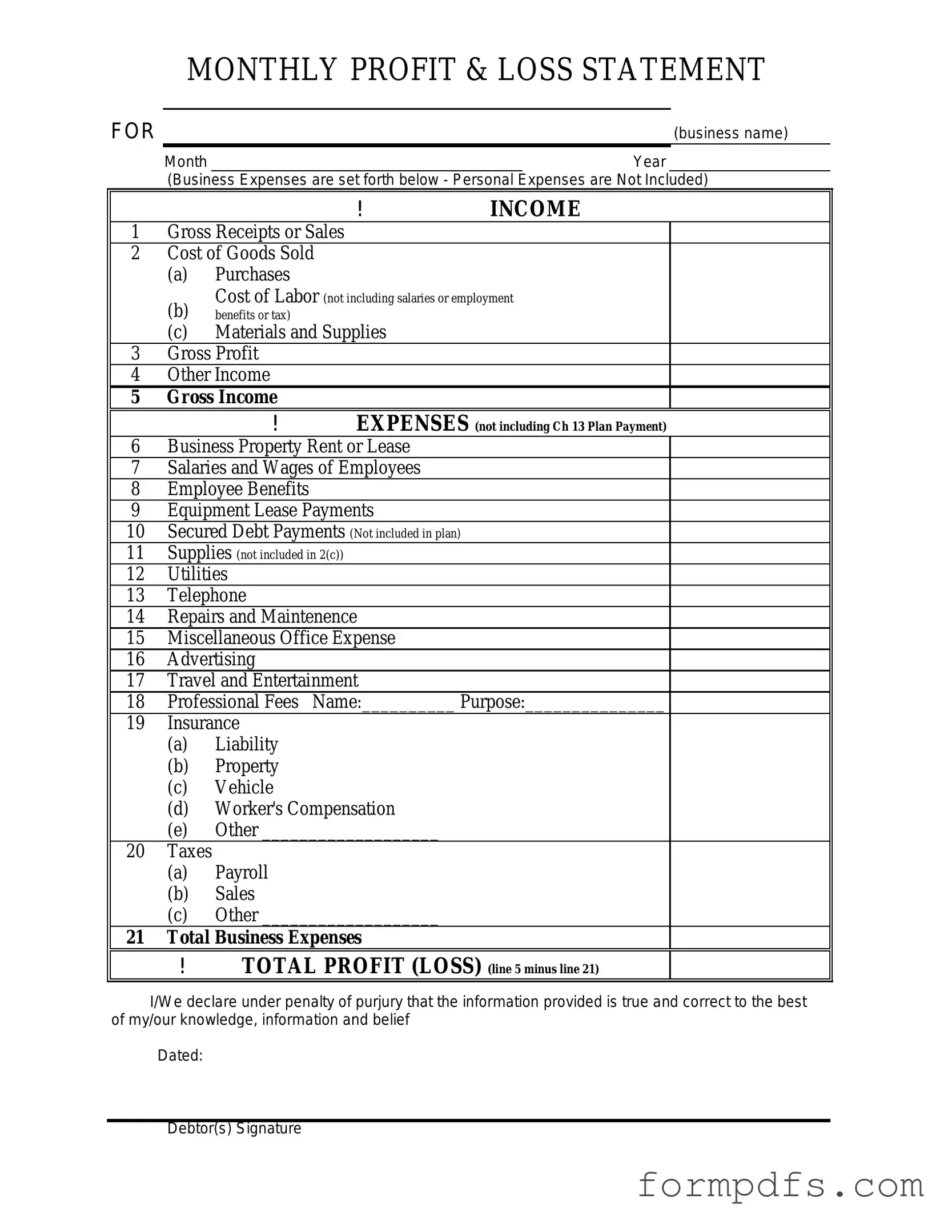What is a Profit and Loss form?
A Profit and Loss form, often referred to as a P&L statement, is a financial document that summarizes a company's revenues, costs, and expenses during a specific period. This form provides insights into the company’s ability to generate profit by comparing revenue against its costs. It is a crucial tool for assessing financial performance and making informed business decisions.
Why is the Profit and Loss form important?
The Profit and Loss form serves multiple purposes. It helps business owners understand their financial health by showing how much money is made and spent. Investors and stakeholders often review this document to evaluate the viability and profitability of a business. Additionally, it plays a vital role in tax preparation and compliance, as it provides necessary information for reporting income and expenses.
How often should a Profit and Loss form be prepared?
Typically, businesses prepare a Profit and Loss form on a monthly, quarterly, or annual basis. Monthly reports can provide timely insights into financial performance, allowing for quick adjustments. Quarterly and annual reports are often used for broader analysis and are essential for tax reporting and strategic planning.
What components are included in a Profit and Loss form?
A standard Profit and Loss form includes several key components: total revenue, cost of goods sold (COGS), gross profit, operating expenses, and net profit. Each component plays a role in determining the overall profitability of the business. Additional items, such as taxes and interest, may also be included to provide a comprehensive view of financial performance.
How do I calculate net profit from the Profit and Loss form?
To calculate net profit, start with total revenue and subtract the cost of goods sold to find the gross profit. From the gross profit, subtract operating expenses, taxes, and any other expenses. The resulting figure is the net profit, which indicates the actual profit earned by the business after all expenses have been accounted for.
Can the Profit and Loss form help in budgeting?
Yes, the Profit and Loss form is an invaluable tool for budgeting. By analyzing past performance, businesses can identify trends in revenue and expenses. This historical data can inform future budgetary decisions, helping to set realistic financial goals and allocate resources more effectively.
What is the difference between gross profit and net profit?
Gross profit is the revenue remaining after deducting the cost of goods sold. It reflects the efficiency of production and sales processes. In contrast, net profit is the amount left after all expenses, including operating expenses, taxes, and interest, have been subtracted from total revenue. Net profit provides a clearer picture of a company's overall profitability.
How can I improve my Profit and Loss results?
Improving Profit and Loss results can be achieved through various strategies. Increasing sales revenue, reducing costs, and optimizing operational efficiency are key areas to focus on. Additionally, reviewing pricing strategies, managing inventory more effectively, and controlling overhead expenses can contribute to better financial outcomes.
Is the Profit and Loss form the same as the income statement?
Yes, the Profit and Loss form is often synonymous with the income statement. Both documents serve the same purpose of detailing a company’s revenues and expenses over a specific period. However, terminology may vary depending on industry practices or regional preferences.
Where can I find a template for a Profit and Loss form?
Templates for Profit and Loss forms can be found through various online resources, including accounting software, financial websites, and business management platforms. Many of these templates are customizable, allowing businesses to tailor the form to their specific needs and ensure all relevant financial data is captured.
